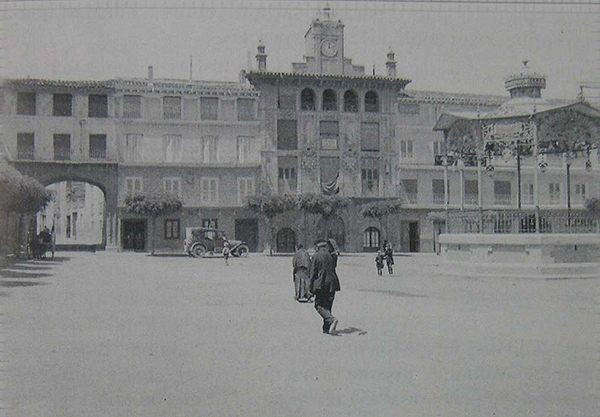25 August
lecture series
FOUR PERSPECTIVES ON THE CULTURAL HERITAGE OF TUDELA
La place mayor como elemento articulador del espacio urbano en el ámbito hispánico: el caso de Tudela (The main as an articulating element of urban space in the Hispanic area: the case of Tudela).
Ms. Esther Elizalde Marquina
Chair of Navarrese Heritage and Art
The goal of the lecture consisted of presenting the place as an articulating element of the urban fabric and a life-generating component throughout history. This presentation served to contextualize the place of the Fueros de Tudela, and to analyze it in detail.
First of all, the origin and evolution of the main place from Antiquity to the sixteenth century, a period in which in Spain the main squares as we know them today were built, following the guidelines contained in the Ordinances of Discoveries. New Towns and Pacifications 1573 issued by Philip II. With these dispositions the model of place was regularized in Spain and exported to Latin America; although it is true, there would exist certain differences between some others.
Next, the main formal features of the main squares were explained, emphasizing their importance as the backbone of the urban layout. In this way, the checkerboard system followed by the Hispanic American cities was illustrated, having as central axis the main square place , built ex novo, where the main roads of the city flowed. The same occurred in Spain, pointing out the great difference between them, as was the obligation to adapt to a space already architecturally delimited.
However, as it became clear, this singularity did not suppose any obstacle for the development of the same functions in both types of bullrings. Thus, the multiple tasks that the main squares carried out in each historical stage were addressed, the most famous being that of bullring.
After this, and in order to situate in space and time, the most relevant Spanish main squares were presented, such as Valladolid, Zocodover in Toledo, Madrid, Salamanca, Vitoria-Gasteiz and Bilbao.
Next, lecture focused on the case of Tudela. Having been declared "one of the most beautiful squares in Spain", the place de los Fueros was explained from its construction and design (1687-1691), as well as the subsequent interventions that made it the cornerstone for both urban expansion beyond its walls, and for the creation of new roads to Castile and Aragon; becoming a real "bridge to the future" for the people of Tudela and urban living room for those who visit it.

Plate 1. Tudela. place de los Fueros.
(Photo: Salinas. file Municipal de Tudela)

Plate 2. Tudela place de los Fueros
(Photo: http://www.laposadadesanmarcial.es/)
